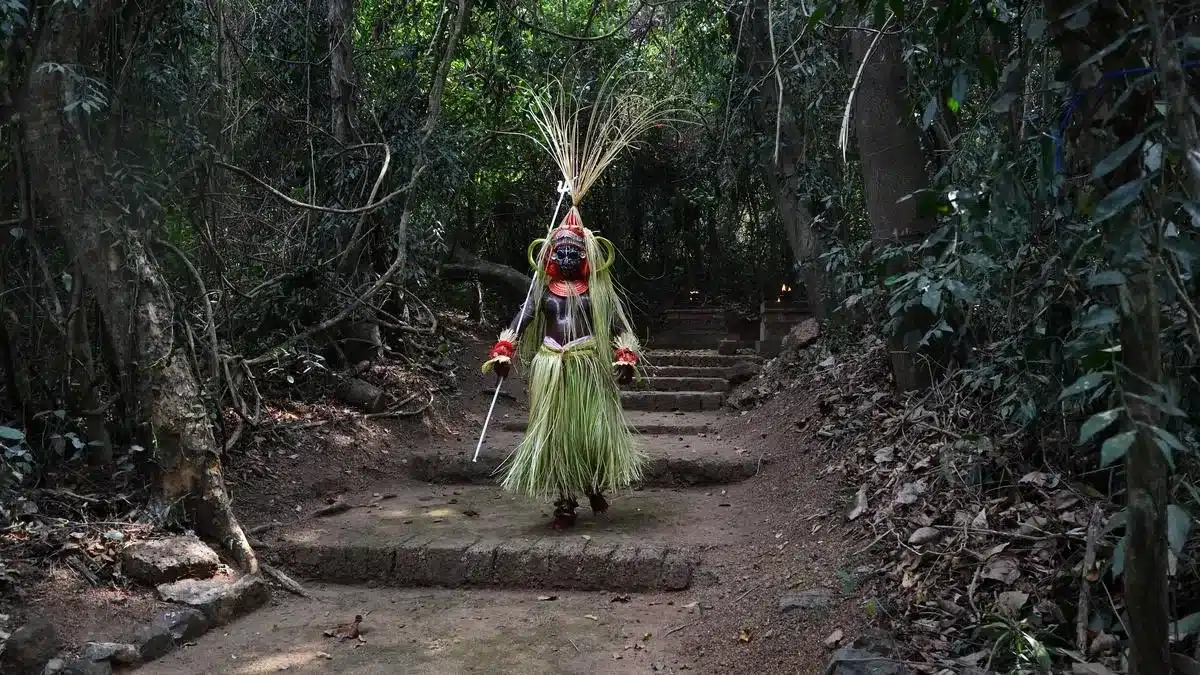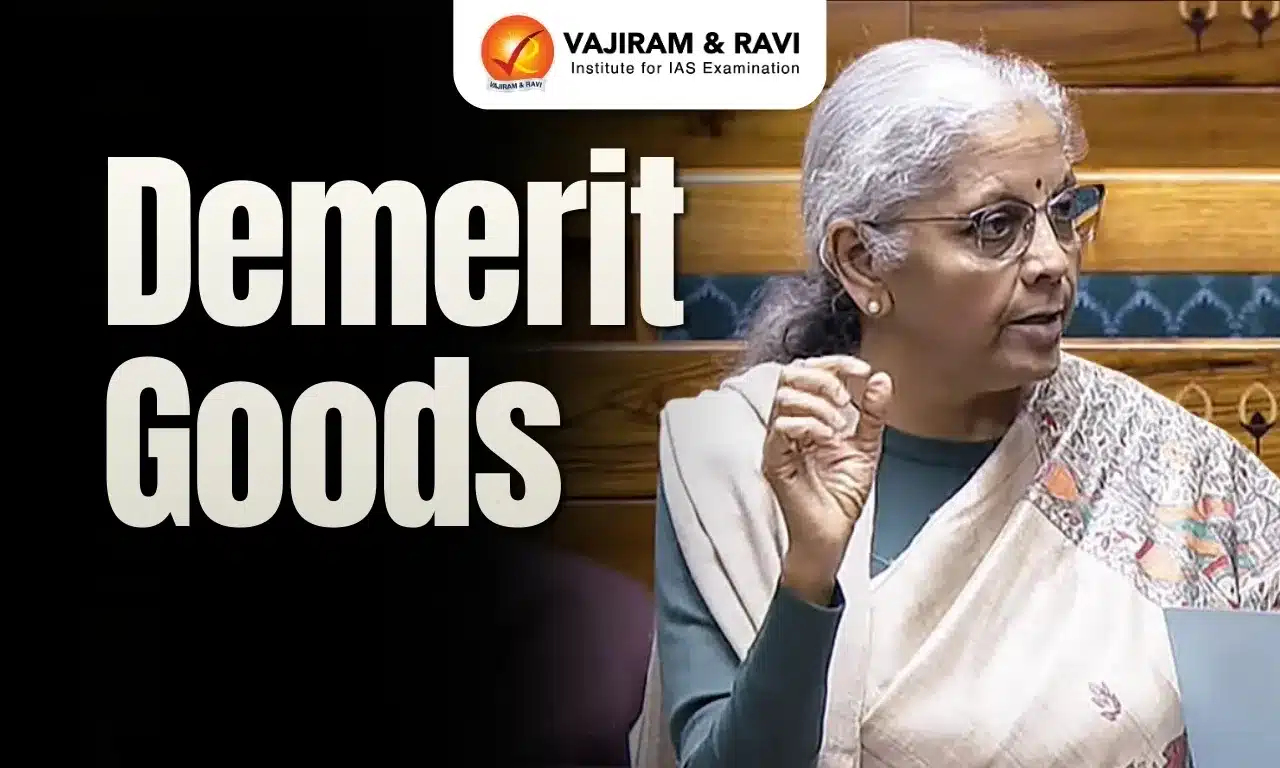What’s in today’s article?
- Why in News?
- What are Sacred Groves?
- SC’s Directives for the Management and Preservation of Sacred Groves Across India
- Significance of the SC’s Directives and Future Course
- Conclusion
Why in News?
- In a landmark judgment, the Supreme Court (hearing applications dealing with the protection of sacred groves of Rajasthan) directed the Union government to develop a comprehensive policy for the management and preservation of sacred groves across India.
- Sacred groves, small patches of forest traditionally protected for their religious and cultural significance, also play a vital role in conserving biodiversity.
What are Sacred Groves?
- Definition: Sacred groves are forest patches safeguarded by local communities due to their spiritual and cultural importance.
- Distribution: These groves are prominent in states such as Tamil Nadu, Kerala, Karnataka, and Maharashtra, contributing significantly to local biodiversity.
- Legal framework:
- The management of wildlife and its habitat is primarily the responsibility of the concerned State Government.
- The Wild Life (Protection) Act, 1972 empowers the State Government for declaration of any private or community land, as a community reserve, for protecting –
- Fauna,
- Flora and
- Traditional or cultural conservation values and practices.
SC’s Directives for the Management and Preservation of Sacred Groves Across India:
- Cited a verse from the Bhagavad Gita: “Nature is the source of all material things: the maker, the means of making, and the things made. Spirit is the source of all consciousness which feels pleasure and feels pain.”
- Policy framework: The court emphasised the need for a national policy and instructed Ministry of Environment, Forest and Climate Change (MoEF&CC) to:
- Conduct a nationwide survey to identify and map sacred groves.
- Clearly mark the boundaries of groves, allowing flexibility for future forest growth.
- Issue strict guidelines to prevent reduction due to denudation or deforestation.
- Recognition under National Forest Policy:
- The apex court highlighted the National Forest Policy of 1988, which supports community-led initiatives to protect forest patches.
- The court encouraged formal recognition of sacred groves as community reserves under the Wild Life (Protection) Act, 1972.
- Empowering traditional communities:
- The court suggested recognising and empowering traditional custodians under the Scheduled Tribes and Other Traditional Forest Dwellers (Recognition of Forest Rights) Act, 2006.
- These communities can regulate harmful activities, ensuring sustainable conservation.
- Rajasthan’s Piplantri village success story:
- The court cited the example of Piplantri village in Rajasthan, where community efforts transformed barren land into thriving groves.
- Initiatives such as planting 111 trees for every girl child have:
- Created sustainable livelihoods.
- Reduced female foeticide.
- Increased income and educational opportunities.
- Empowered women’s self-help groups.
- State-specific instructions:
- The court directed the Rajasthan government to:
- Conduct detailed on-ground and satellite mapping of sacred groves.
- Classify sacred groves as forests based on their ecological and cultural value, regardless of size.
- Provide legal protection and declare groves as community reserves.
- Formation of a supervisory committee: A five-member committee, led by a retired Rajasthan High Court judge, will oversee the mapping and identification process.
- The court directed the Rajasthan government to:
Significance of the SC’s Directives and Future Course:
- Significance:
- The Union has traditionally viewed wildlife and habitat management as State responsibilities.
- The SC’s directive marks a shift by aligning sacred groves with the cultural and traditional rights of communities, urging the MoEF&CC to take the lead.
- This judgment underscores the ecological, cultural, and societal importance of sacred groves, advocating for their preservation as a national priority.
- Future course: The SC has scheduled the case for January 10, 2025, to review compliance reports on the panel’s constitution and survey progress.
Q.1. What is the National Forest Policy of 1988?
The National Forest Policy 1988 envisages that 33% of the geographical area should be under forest or tree cover. Salient features of the policy are: maintenance of environmental stability and restoration of ecological balance, conservation of natural heritage, etc.
Q.2. What is the Scheduled Tribes and Other Traditional Forest Dwellers (Recognition of Forest Rights) Act, 2006 (FRA)?
The FRA recognise and vest the forest rights and occupation in forest land in forest dwelling Scheduled Tribes and other traditional forest dwellers who have been residing in such forests for generations but whose rights could not be recorded.
News: Supreme Court directs Centre to formulate policy to manage sacred groves, cites Gita | TH | PIB
Last updated on November, 2025
→ Check out the latest UPSC Syllabus 2026 here.
→ Join Vajiram & Ravi’s Interview Guidance Programme for expert help to crack your final UPSC stage.
→ UPSC Mains Result 2025 is now out.
→ UPSC Notification 2026 is scheduled to be released on January 14, 2026.
→ UPSC Calendar 2026 is released on 15th May, 2025.
→ The UPSC Vacancy 2025 were released 1129, out of which 979 were for UPSC CSE and remaining 150 are for UPSC IFoS.
→ UPSC Prelims 2026 will be conducted on 24th May, 2026 & UPSC Mains 2026 will be conducted on 21st August 2026.
→ The UPSC Selection Process is of 3 stages-Prelims, Mains and Interview.
→ UPSC Result 2024 is released with latest UPSC Marksheet 2024. Check Now!
→ UPSC Prelims Result 2025 is out now for the CSE held on 25 May 2025.
→ UPSC Toppers List 2024 is released now. Shakti Dubey is UPSC AIR 1 2024 Topper.
→ UPSC Prelims Question Paper 2025 and Unofficial Prelims Answer Key 2025 are available now.
→ UPSC Mains Question Paper 2025 is out for Essay, GS 1, 2, 3 & GS 4.
→ UPSC Mains Indian Language Question Paper 2025 is now out.
→ UPSC Mains Optional Question Paper 2025 is now out.
→ Also check Best IAS Coaching in Delhi

















